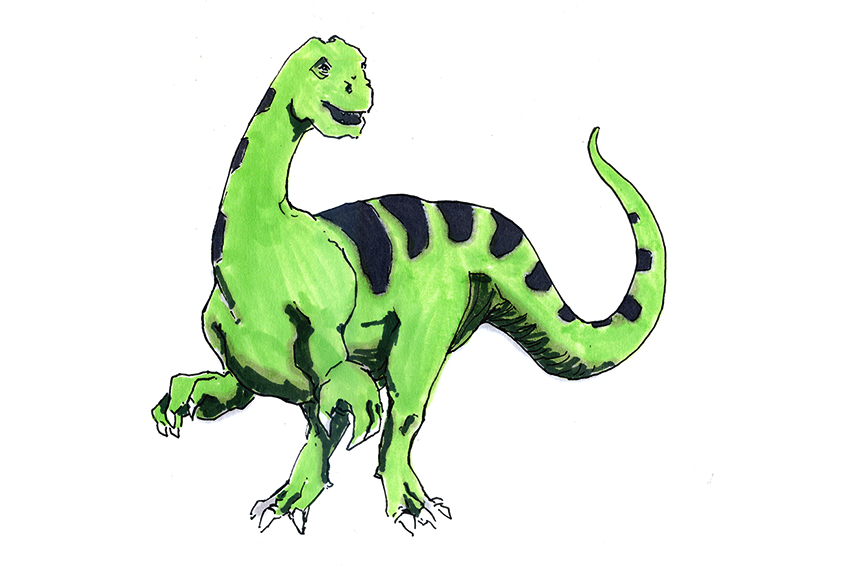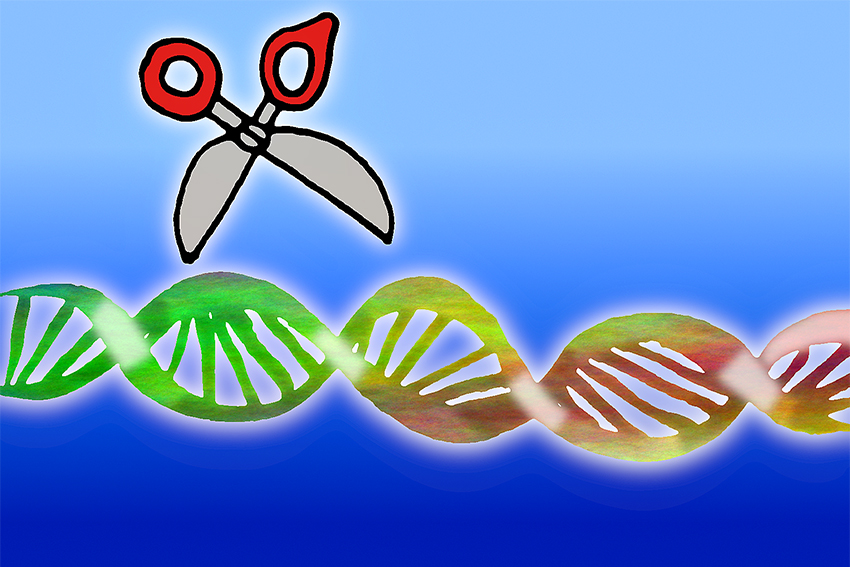The group of dinosaurs known as sauropods includes the largest animal to ever live on land, according to Historical Biology. This month, UT Ph.D. graduate Adam Marsh and professor Timothy Rowe published a new description of fossils discovered by Rowe. The character of the fossils has aided researchers in understanding how sauropods came to be so big.
The fossils described in the paper belong to Sarahsaurus aurifontanalis. Rowe said he unearthed the bones in northern Arizona in 1997 and published his findings a few years later. The bones belong to the Navajo Nation, who own the land where the fossils were found, but were housed in UT’s Vertebrate Paleontology Laboratory. The dinosaur was named after Sarah Butler, a philanthropist who has contributed to the University and to the City of Austin.
Rowe said he found two Sarahsaurus specimens in the same quarry, as well as a Dilophosaurus, a dinosaur made famous by the first Jurassic Park movie. This made sorting out the fossils a challenge.
“We spent two long seasons at this quarry trying to untangle these bones and wrap them in plastic jackets and carry them out of the Badlands back to our vehicles,” Rowe said.
According to Marsh, who worked on this project for his master’s degree at UT, Sarahsaurus was a member of a group of dinosaurs called sauropodomorphs. Sauropods would eventually comprise a subsection of this group.
“Think of these relationships as nesting dolls,” Marsh said. “Sauropods are the smallest group within that nesting doll. Something like Sarahsaurus is not a sauropod, but it is a sauropodomorph.”
Marsh said Sarahsaurus was the length of an SUV and would have stood a meter tall at the hip. Although not quite as big as later relatives, Marsh said that Sarahsaurus was larger than its sauropodomorph predecessors. This would lead to the evolution of creatures such as the Argentinosaurus, a sauropod that could weigh up to 120 tons. This is over 17 times the weight of an African Elephant, which according to National Geographic, can be as heavy as 7 tons.
Marsh added that larger dinosaurs characterized the shift from the late Triassic to the early Jurassic era, a transition that occurred 200 million years ago, according to National Geographic.
“When you look down into the Triassic, there are all of these tiny dinosaurs running around, and then when you get into the early Jurassic, you get larger dinosaurs like Sarahsaurus,” Marsh said.
In addition to being larger, Marsh said the physical characteristics of Sarahsaurus could provide insight into how sauropods came to reach their formidable sizes.
“These early sauropodomorphs — like Sarahsaurus, the sauropod ancestors — are basically gaining these sauropod traits in a stepwise fashion throughout that lineage,” Marsh said.
One such trait was longer neck vertebrae, Marsh said. This would lead to the additional neck vertebrae acquired by later sauropods. Another trait that developed was more robust femurs, or thighbones. Although Sarahsaurus likely walked on two legs, Marsh said their more robust femurs presaged four-legged sauropods like Brontosaurus.
Marsh said that by analyzing these characteristics, scientists can determine what traits that an organism such as Sarahsaurus share with other species and what traits are unique to them. Marsh said the particular Sarahsaurus specimens described in the paper lent themselves well to this work.
“Because (the Sarahsaurus fossil) is so complete, we actually have a lot of data to work with, which is very nice,” Marsh said.





















